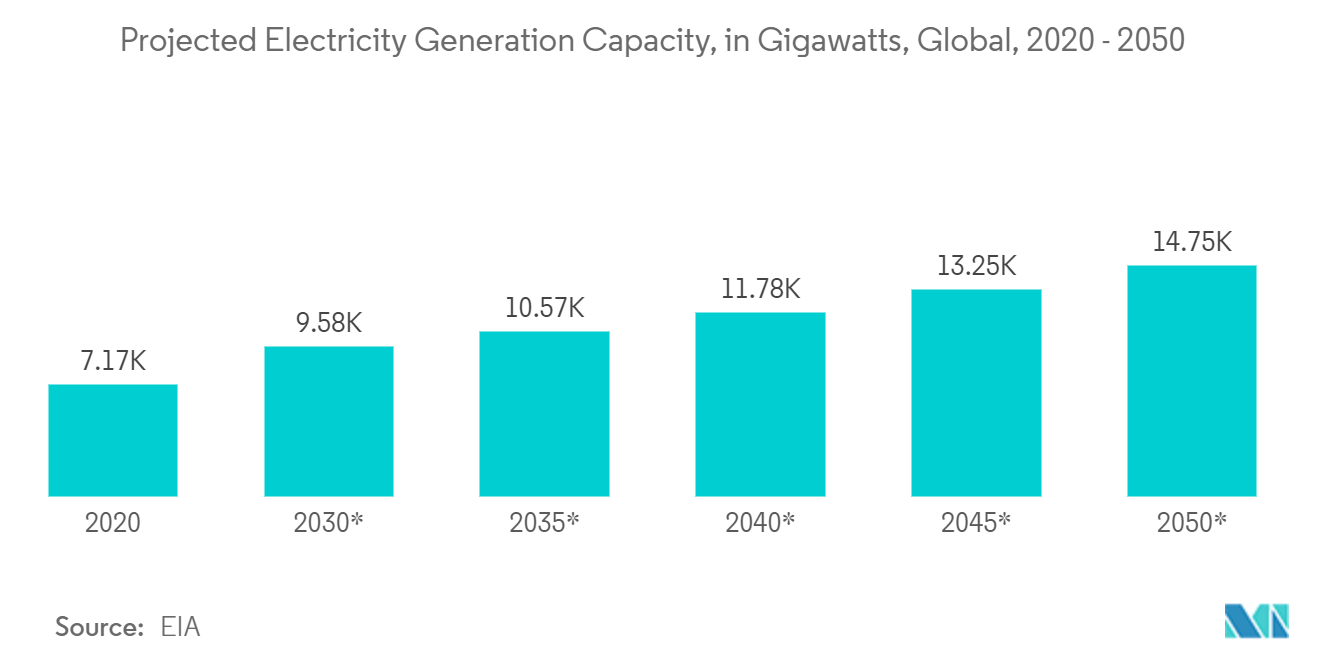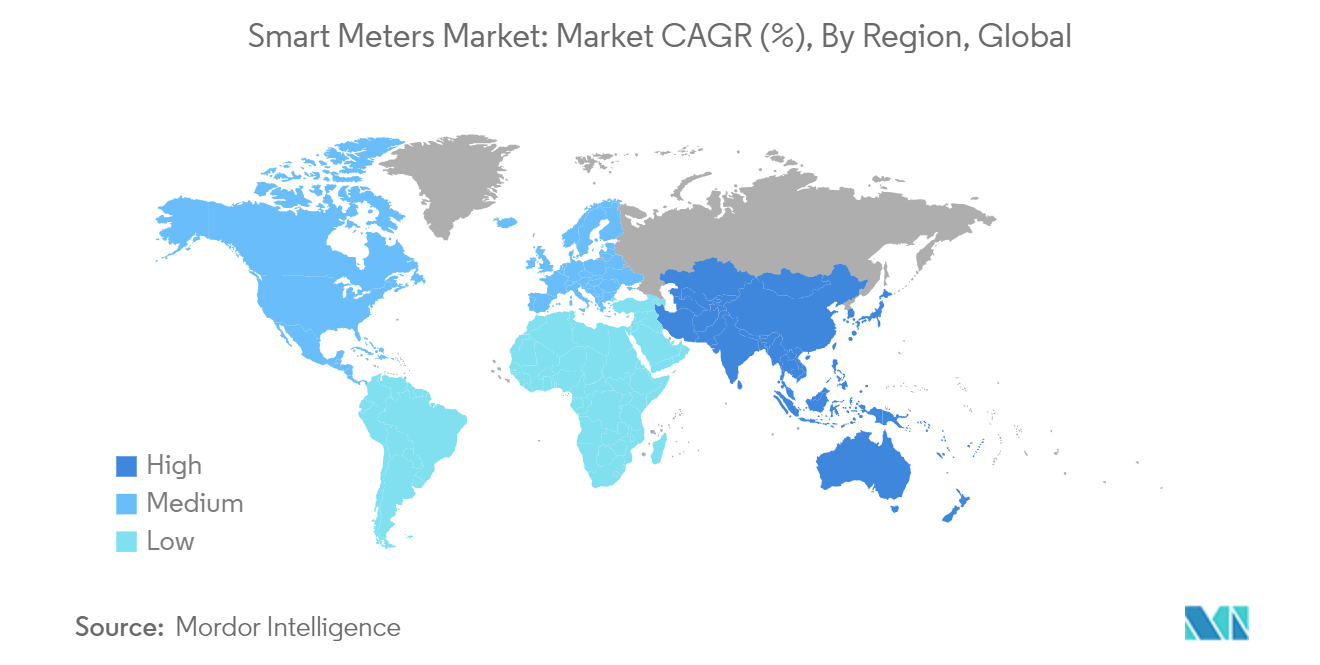Market Trends of Smart Meters Industry
Smart Electricity Meter Dominates the Market and will Continue its Dominance Over the Forecast Period
- Greater government support and investments are anticipated to accelerate the adoption and deployment of smart meters in Asia and the Pacific. In order to prevent monopolies and ensure an adequate supply of smart electricity meters that can be installed throughout the region, it is also necessary to establish a manufacturing base in the area. The state governments were urged to implement smart meters in three years and received an allocation of about INR 2,20,000 million (USD 2.677 billion) for the power and renewable energy sectors.
- According to the GSMA, by 2025, around 1.4 billion smart buildings and 700 million smart homes are expected to be in North America, mainly the United States and Canada, so an increasing number of smart buildings and homes are expected to also lead to an increase in the sale of smart electricity meters.
- Moreover, increasing urbanization and the increasing inclination toward a focus on developing urban lifestyles led to the expansion of the deployment of smart home technologies and devices, which involve automatic control of electricity, light, and energy to avoid wastage. Hence, the increasing adoption of smart home devices and technologies across homes globally is further expected to foster the growth of smart meters in the residential segment.
- Consumer electronics, office equipment, and other plug loads consume nearly 15% to 20% of the total residential and commercial electricity while not in the primary mode. Most of this energy is consumed when they operate in low-power modes (even while they are not in use). Consumers are increasingly inclined to install a smart energy management system to track such scenarios.
- According to the Energy Information Administration (EIA), global electricity generation capacity is expected to more than double in the next three decades, reaching approximately 14.7 terawatts by 2050. In 2020, the world's installed electricity capacity stood at 7.1 terawatts, which shows the demand for electricity around the globe is growing continuously. There is a growing need for utilities to manage and optimize their energy distribution networks. Thus, the availability of detailed information about energy consumption, which can help the consumer identify opportunities to reduce energy usage and save money with smart electricity meters, is projected to increase the adoption of smart electricity meters globally.

Asia-Pacific to Hold Major Share
- China is currently the leading segment in Asia Pacific, with the rollout at its peak due to strict mandates by the government of South China and State Grid, the only two grid companies in the country that drive the process. However, China is currently approaching full deployment, and the gradual end of the launch results in a significant reduction in annual demand.
- China is a major manufacturer of smart electricity meters, with a strong presence of local companies. It is also one of the largest producers of smart electric meters, which were consumed for domestic purposes during the rollout phase. State-owned enterprises dominate the Chinese market. Thus, it is nearly impossible for non-Chinese companies to compete in the country.
- Japan is the fifth-largest carbon emitter in the world. In 2021, the Japanese government promised to reduce emissions by 46% by 2030 due to pressure from many environmental organizations and European nations. Smart grid implementation, enhanced power and distribution networks, and low-carbon energy sources will likely help achieve this objective.
- By then, investor interest in smart grid technology was seen to have significantly increased in Japan due to the country's strong backing from the government, deregulation, and generally declining costs, with several large-scale projects. According to an Asian Power article, it is anticipated that up to 80 million smart meters will be installed nationwide by 2024.
- These improvements have mainly resulted from deploying smart electricity meters, DES, and energy storage technologies but have also seen numerous pilot projects and developments into other innovations like virtual power plants (VPPs), blockchain, and vehicle-to-grid (V2G) technologies. Additionally, the Japanese government plans to spend JPY 20 trillion (USD 155 billion) on promoting investments in new power grid technology, energy-saving homes, and other technology to reduce the nation's carbon footprint.
- The rest of the Asia-Pacific region contains countries and continents like New Zealand, India, Australia, the Philippines, Indonesia, Thailand, South Korea, Malaysia, Singapore, Vietnam, Bangladesh, Pakistan, and many more. Several government initiatives, partnerships, innovations, and acquisitions are expected to fuel market growth in the region during the projected period.


